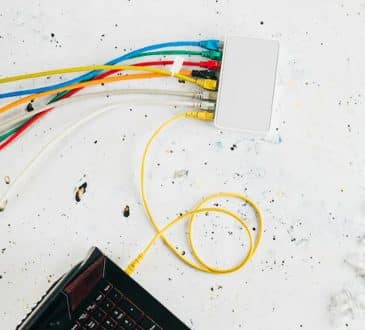Four Key Elements to Build a More Successful Organization in the New Decade

The last decade completely transformed the way in which we do business. Back in 2010, many of the concepts that are now integral to digital commerce—smartphone technology, mobile commerce, BOPUS, etc.—were still in their infancy, if they existed at all. That said, the new decade ahead of us will almost certainly bring more disruptive, revolutionary change to the market than we’ve ever seen.
The 2010s laid the groundwork for incredible new developments in customer experience and business infrastructure. These developments will be the fuel propelling eCommerce growth in the 2020s.
As an executive, it’s your responsibility to drive innovation. This requires you to stay up-to-date with new developments, and always look for ways to build a more efficient organization and provide for more dynamic interactions.
The way I see it, there are four fundamental dimensions you need to consider: customer experience, business model, Infrastructure, and technology. The next ten years will shake up each of these categories, to the point we may not even recognize them by the decade’s end. So, let’s go through each one, examine some of the dominant trends, and explore how they should impact decisions in your overall strategy.
Customer Experience
It grows harder each day to differentiate oneself on the basis of price or selection. Where you can set yourself apart, though, is the quality of the customer experience you provide. This is contingent on your ability to personalize the experience and tailor it to your customers’ individual preferences.
Remembering your customers’ interests, recommending items, streamlining the shopping and checkout process…customers want it all. They also want a dynamic, unified experience across multiple channels. At the same time, they’re very concerned at about privacy and security; buyers don’t want to share any more of their data than is absolutely necessary.
The key to striking a balance between these opposing interests is open communication and consumer education. You should take time to share information with customers about how to protect themselves online. Also, be forthcoming about the data you collect and why you collect it. Customers generally don’t mind, so long as they know exactly why you want access to their information.
Business Models
The pressure to compete against giants like Amazon or Walmart can really squeeze your profit margin. This compulsion leads many sellers to explore new business models that offer more competitive advantage.
Subscription services and recurring billing, for instance, are incredibly popular options. They offer a consistent, reliable revenue stream, without the need to invest additional resources in the acquisition. Similarly, enterprise marketplaces make it possible to grow your presence and customer base quickly without the need to build out a platform.
Unfortunately, many of the most promising new approaches to business involve additional risk. For instance, subscription billing models are more susceptible to payment disputes than standard transactions. As with personalization, the key here is in-depth data. You need detailed customer information and analysis to ensure customer satisfaction and safeguard against potential problems.
Technologies
This is the most difficult group of trends to predict. Technologies like AI, for instance, have been in development for years, and all that time people forecasted that the great leap forward in AI innovation was right around the corner.
Rather than an explosion of capabilities for AI tech, I anticipate that we’ll continue seeing gradual, steady development. Artificial intelligence will spread and develop new uses over time, facilitating a smoother customer experience. Of course, there are unpredictable variables, too, like so-called “Thing” commerce.
IoT devices will take on increasingly-central roles in the future of digital commerce. Think, for instance, about a refrigerator that knows when you’re running low on an item, and can automatically add it to a shopping list, or even purchase it and schedule delivery. That’s just one possibility among thousands of potential uses for Thing commerce tech.
You’ll need to keep a close eye on new tech developments. Always be on the lookout for ways to incorporate new tech to optimize, without jeopardizing existing processes.
Infrastructure
Of course, enabling all these changes in how we approach business won’t be a simple “plug-and-play” procedure. Upgrading technologies and business models demands new infrastructure as well.
Visual commerce, for instance, will be key to enabling a better customer experience. Employing this augmented reality tech means significant changes in infrastructure are necessary, though. You can manage this and other experiential developments coming in the next several years through API-based, or “headless” commerce.
With API-based commerce, it’s possible to reinvent the frontend side of your website, constantly tooling with new approaches to customer engagement, without breaking the backend. The management of key routine functions like order fulfillment and billing remains unaffected.
Decisioning and Strategy for 2020 and Beyond
Of course, knowing what to watch for is only the first step. How do you determine where to allocate resources? Even further, how do you then take these disparate practices and pull them together to develop a workable strategy for success?
We’re engaged in predictive work here; there’s no certainty regarding what happens tomorrow, but you do have some guidelines. Specifically, the innovations that produce success in the coming decade will be the ones that provide the best answers for these three key questions:
- How does it help us to attract, serve, and retain customers?
- How does it help us to generate and sustain revenue?
- How can we ensure and improve security?
Keeping these questions in mind is the best method of responding to trends and adopting new strategies and technologies as they correspond to the four dimensions I outlined above.
Note: BOPUS— (buy online, pick up in-store) is a business model that allows consumers to shop and place orders online and then pick up their purchases in the brick-and-mortar store, often within the same day.
Add CEOWORLD magazine to your Google News feed.
Follow CEOWORLD magazine headlines on: Google News, LinkedIn, Twitter, and Facebook.
This report/news/ranking/statistics has been prepared only for general guidance on matters of interest and does not constitute professional advice. You should not act upon the information contained in this publication without obtaining specific professional advice. No representation or warranty (express or implied) is given as to the accuracy or completeness of the information contained in this publication, and, to the extent permitted by law, CEOWORLD magazine does not accept or assume any liability, responsibility or duty of care for any consequences of you or anyone else acting, or refraining to act, in reliance on the information contained in this publication or for any decision based on it.
Copyright 2024 The CEOWORLD magazine. All rights reserved. This material (and any extract from it) must not be copied, redistributed or placed on any website, without CEOWORLD magazine' prior written consent. For media queries, please contact: info@ceoworld.biz
SUBSCRIBE NEWSLETTER








